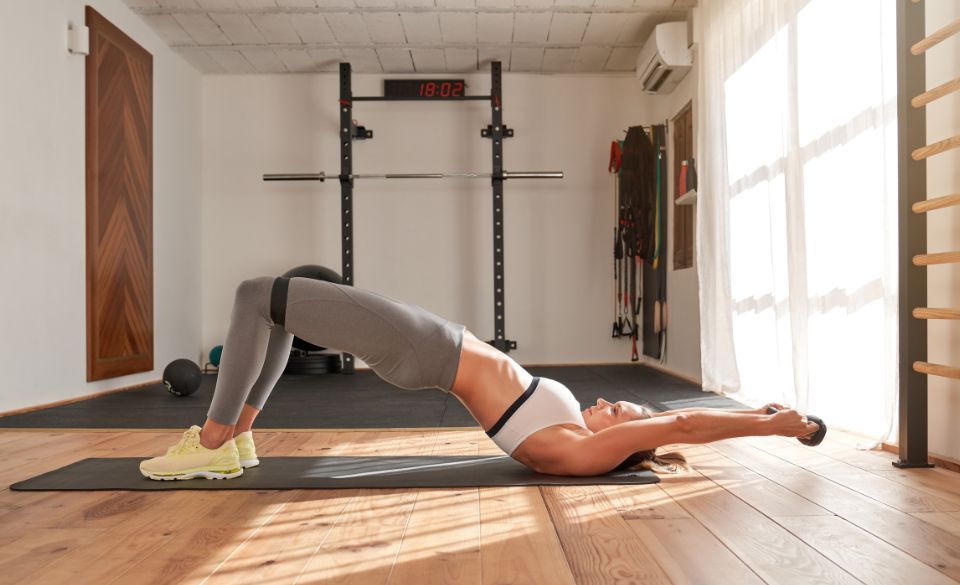
Best Glute Exercises for Runners
Page Contents
When it comes to running, having strong glutes is more important than you might think. Your gluteal muscles, including the gluteus maximus, gluteus medius, and gluteus minimus, play a significant role in your running performance and overall biomechanics. In this article, we will explore why strong glutes are crucial for runners and introduce you to the best glute exercises specifically designed to enhance your running stride and prevent injuries.
Why are strong glutes important for runners?
Strong glutes are essential for runners because they provide power, stability, and support throughout each stride. When your glutes are weak, other muscles compensate, leading to imbalances and inefficient movement patterns. The gluteus maximus, the largest muscle in the gluteal group, is responsible for hip extension, which propels you forward during each stride. Strong glutes help generate more power and speed, allowing you to cover more ground with less effort. Additionally, strong glutes promote stability and proper alignment, reducing the risk of injuries such as IT band syndrome and knee pain.
How weak glutes affect your running stride
If your glutes are weak, it can negatively impact your running stride and overall performance. Weak glutes may lead to overcompensation by other muscles, such as the hamstrings and lower back, which can cause imbalances and increase the risk of injury. When your glutes are not adequately engaged, your hip extensors may become less efficient, leading to reduced power generation and decreased stride length. This can result in slower running times and a less efficient use of energy. Moreover, weak glutes can contribute to poor pelvic stability and alignment, leading to excessive inward rotation of the knees, which can further increase the risk of knee injuries.
How often should you train your glutes?
To effectively strengthen your glutes, aim to incorporate glute exercises into your training routine two to three times per week. This frequency allows for proper recovery and adaptation. However, it’s important to note that individual needs may vary. If you have specific weaknesses or imbalances, you may benefit from more frequent glute training or additional exercises targeting the glutes during your warm-up or cool-down. Listen to your body and adjust your training accordingly.
Best Glute Exercises for Runners
1. Squats: Squats are a compound exercise that targets the glutes, quadriceps, and hamstrings. Begin with your feet shoulder-width apart, lower your body by bending your knees and hips, and then push through your heels to return to the starting position. Focus on engaging your glutes throughout the movement. As you become more comfortable, you can progress to weighted squats using dumbbells or a barbell to further challenge your glute muscles.
2. Hip Thrusts: Hip thrusts are a highly effective exercise for targeting the glutes. Start by sitting on the ground with your upper back resting against a stable surface, such as a bench. Place a weighted barbell or a dumbbell across your hips. Drive through your heels and lift your hips upward until your body forms a straight line from your knees to your shoulders. Squeeze your glutes at the top of the movement, then slowly lower back down. Hip thrusts activate the glute muscles while also improving hip extension strength and power.
3. Single-Leg Glute Bridges: Single-leg glute bridges are excellent for isolating each glute muscle individually and addressing any muscle imbalances. Lie on your back with your knees bent and feet flat on the ground. Lift one leg off the ground, then drive through the heel of the other foot to lift your hips upward. Squeeze your glutes at the top and hold for a moment before lowering back down. Repeat on the other leg. This exercise targets the glutes while also improving stability and control.
4. Clamshells: Clamshells are a simple yet effective exercise for activating the gluteus medius, which is crucial for maintaining stability during running. Begin by lying on your side with your knees bent and feet together. Keeping your feet touching, open your knees like a clamshell while maintaining a stable core and avoiding rotation of the hips. Pause at the top of the movement and then slowly return to the starting position. Repeat on the other side. Clamshells target the gluteus medius and help prevent excessive inward knee collapse.
Additional Tips for Glute Training and Running Performance
In addition to incorporating the best glute exercises into your training routine, there are a few additional tips and considerations that can further enhance your glute strength and running performance:
1. Activate Your Glutes Before Running
Before you hit the road or the trail, it’s beneficial to activate your glute muscles to ensure they are properly engaged during your run. Perform glute activation exercises such as glute bridges, lateral band walks, or fire hydrants to wake up your glutes and establish a mind-muscle connection. This will help ensure that your glutes are activated and firing properly, leading to more efficient running mechanics.
2. Focus on Hip Extension
Running is a repetitive motion that involves hip extension, so it’s important to focus on exercises that specifically target this movement. In addition to the glute exercises mentioned earlier, exercises like Romanian deadlifts, step-ups, and lunges can also help strengthen the glutes and improve hip extension strength. These exercises mimic the running motion and further enhance your glute activation and running performance.
3. Incorporate Plyometric Exercises
Plyometric exercises, also known as explosive movements, can be beneficial for runners as they help develop power and explosiveness in the glutes. Exercises like box jumps, squat jumps, or single-leg hops can improve your running stride by increasing your ability to generate force and power with each step. Start with lower-intensity plyometrics and gradually progress as your strength and power improve.
4. Maintain Proper Running Form
While glute strength is important, it’s equally crucial to maintain proper running form to optimize your performance and prevent injuries. Focus on maintaining an upright posture, engaging your core, and avoiding excessive leaning or forward tilt. Ensure that your foot strikes the ground beneath your hips, allowing for a natural push-off and engagement of the glutes during each stride. Incorporate drills and exercises that emphasize proper running form to reinforce good habits and mechanics.
5. Allow for Rest and Recovery
Just like any other muscle group, your glutes need time to recover and rebuild. Incorporate rest days into your training plan to allow your glutes to rest and repair. During rest days, focus on stretching, foam rolling, or other recovery techniques to promote muscle recovery and prevent tightness. Proper rest and recovery will help prevent overuse injuries and keep your glutes strong and ready for your next run.
Final Words
Incorporating glute exercises into your training routine is essential for runners looking to improve their performance and reduce the risk of injuries. Strong glutes provide power, stability, and proper biomechanics during your running stride. By regularly performing exercises such as squats, hip thrusts, single-leg glute bridges, and clamshells, you’ll strengthen your gluteal muscles, enhance your running efficiency, and promote overall strength and stability. Remember to focus on proper form, gradually increase the intensity or resistance, and listen to your body’s needs. With strong glutes, you’ll take your running to the next level and enjoy the benefits of improved performance and injury prevention. So, lace up your running shoes, incorporate these glute exercises into your training plan.




